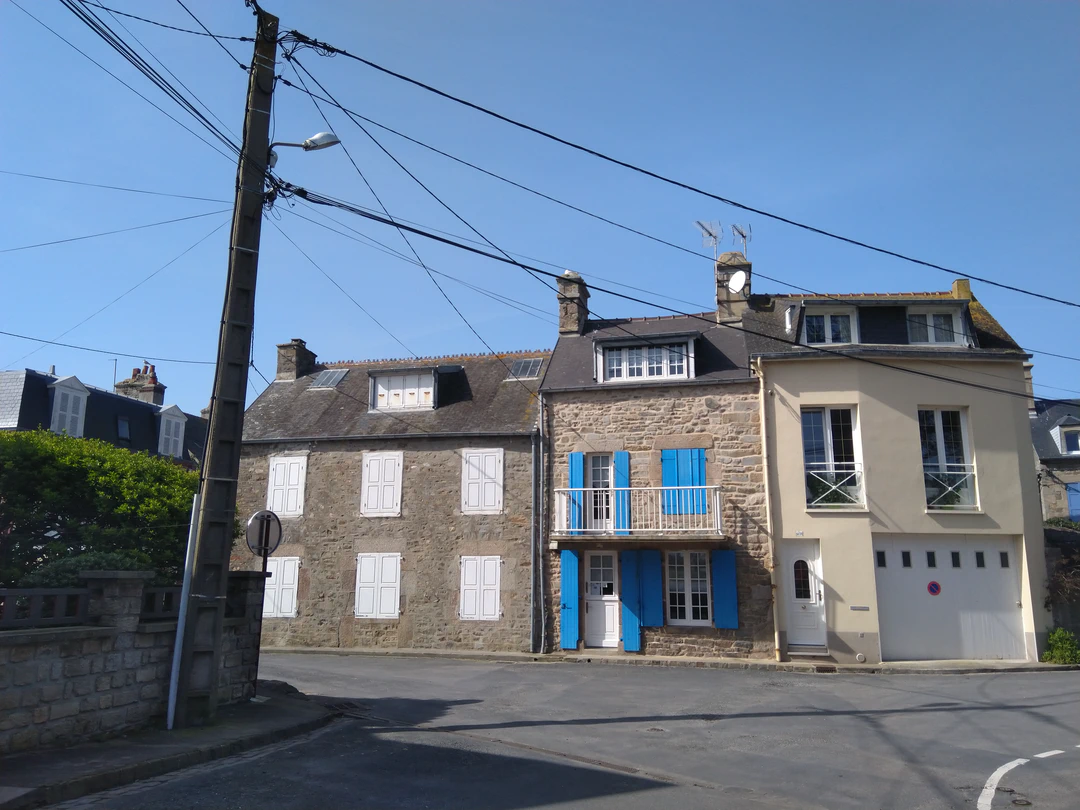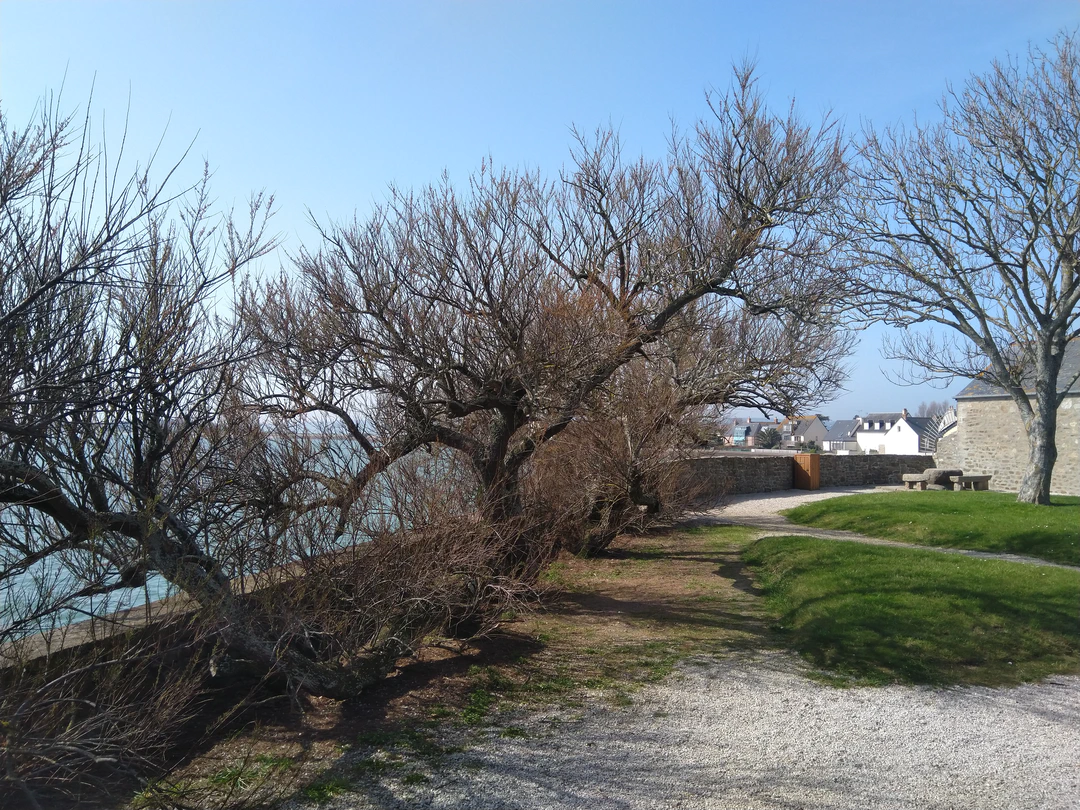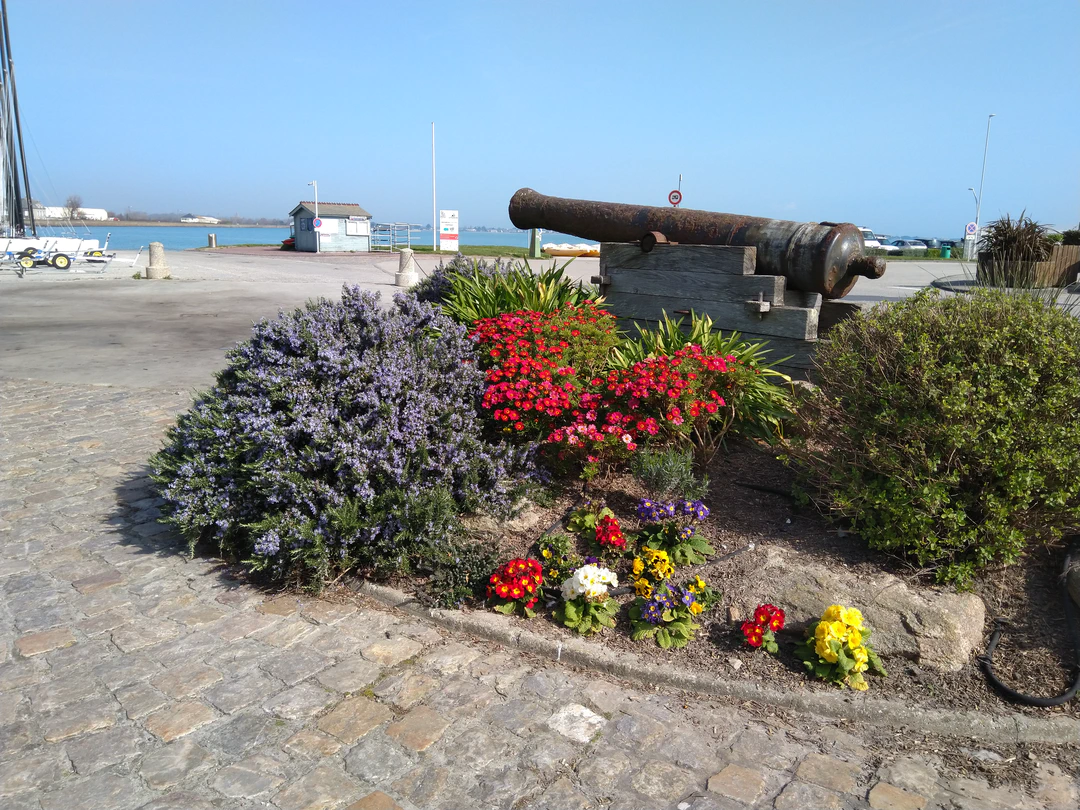After some postponing due to Covid, we are back on the boat! The first two days are spent preparing the boat for sailing, cleaning up and sorting all the new things we have brought with us. We also tourist around a bit in Caen, which has become possibly even nicer compared to how we left it. This time of the year, the blossoms are snowing down on the market stands with antique books, which creates quite a pleasant ambience.
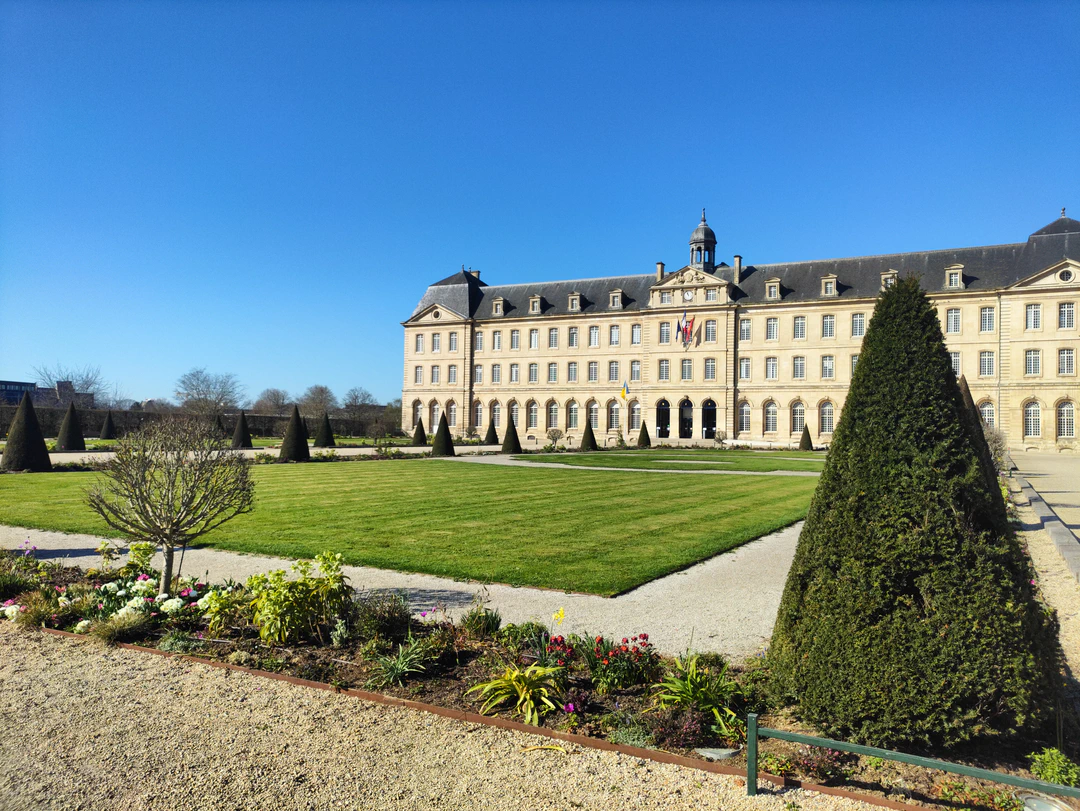
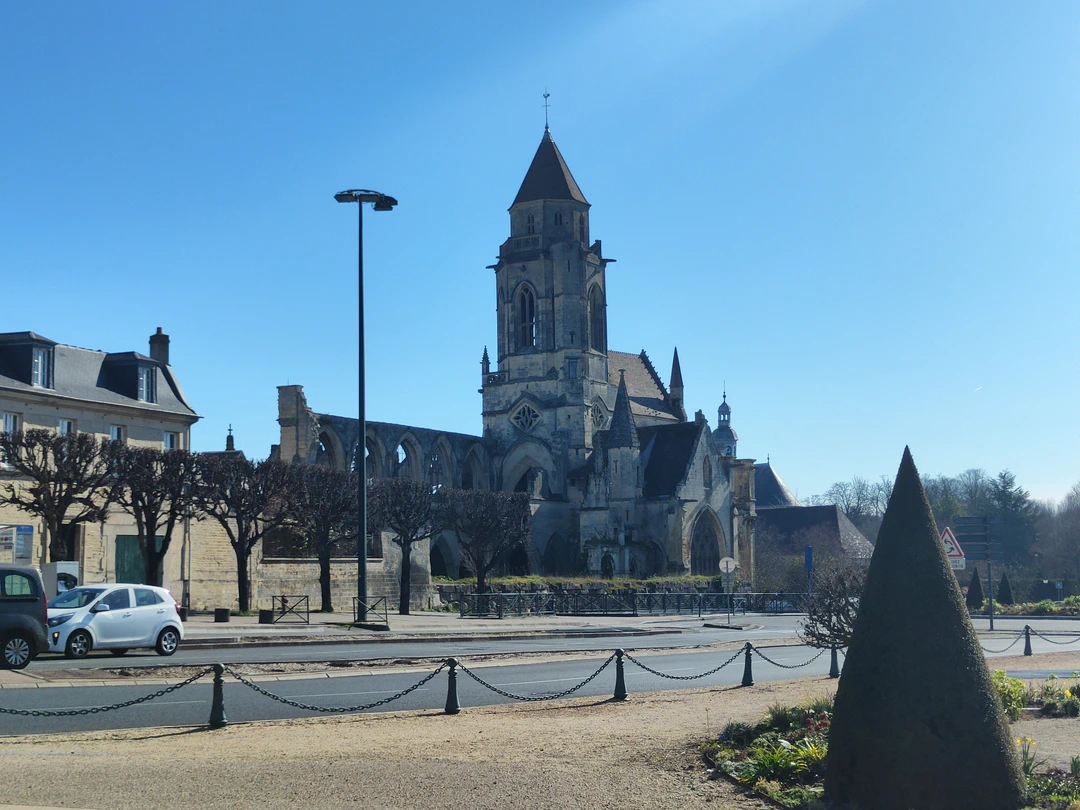
On the second day, we make the trip from Caen to Ouistreham over the channel, crossing several bridges. There is an icy wind blowing, but the sun on our face makes it enjoyable.
Nature has changed since we last sailed here. Instead of the leaves varying from auburn to gold, there is a vague bright green haze over the trees. In the green grass, white daisies and yellow dandelions have sprung up. We enjoy a cup of tea and a walk on the beach of Ouistreham, which is the most eastern of the D-Day beaches (Sword).
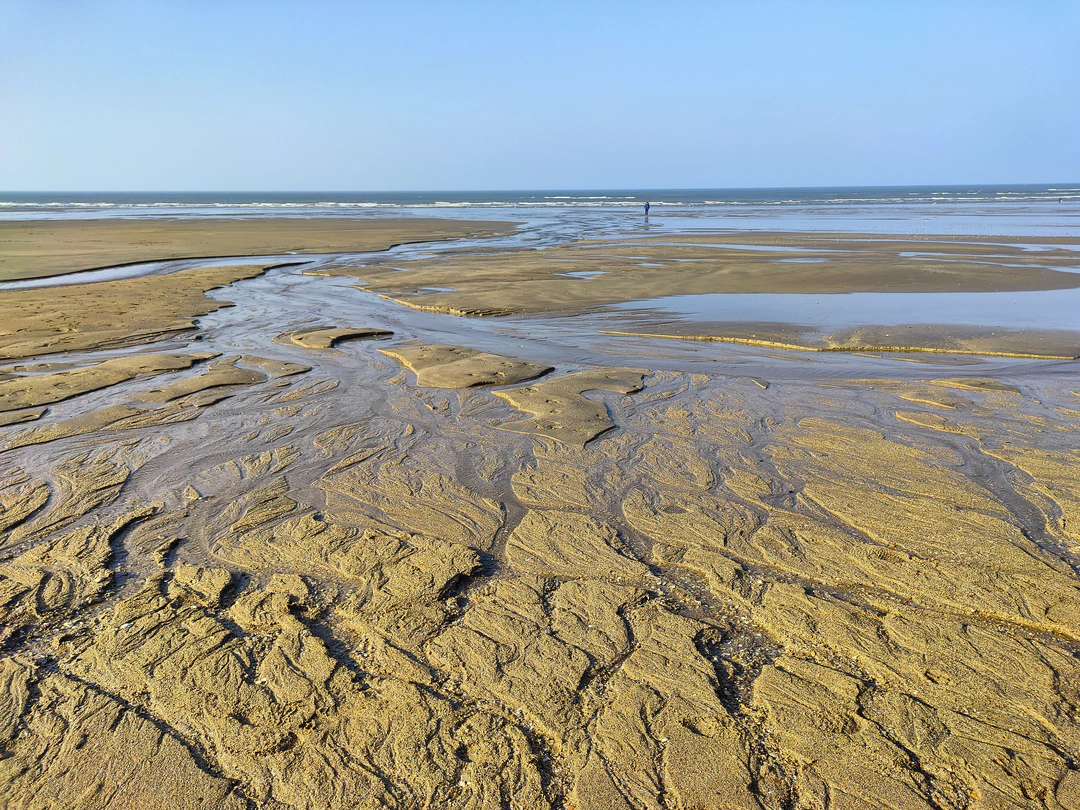
The next morning, we take the first opportunity to pass the lock to the sea at 8:45. It is Sunday and besides a fishing vessel, four other sailing yachts and four motorboats are joining us in the lock. It just about fits. The French gentleman next to us tells us he expects the wind to become more in two hours, which would be good news because there is only a very light breeze. Once out on the sea, we spot a porpoise, which forms an excellent start to the day! We hoist the sails, and it turns out we have attached them completely correctly: another pleasant surprise. With the wind in the back, we start to follow the coast westwards.
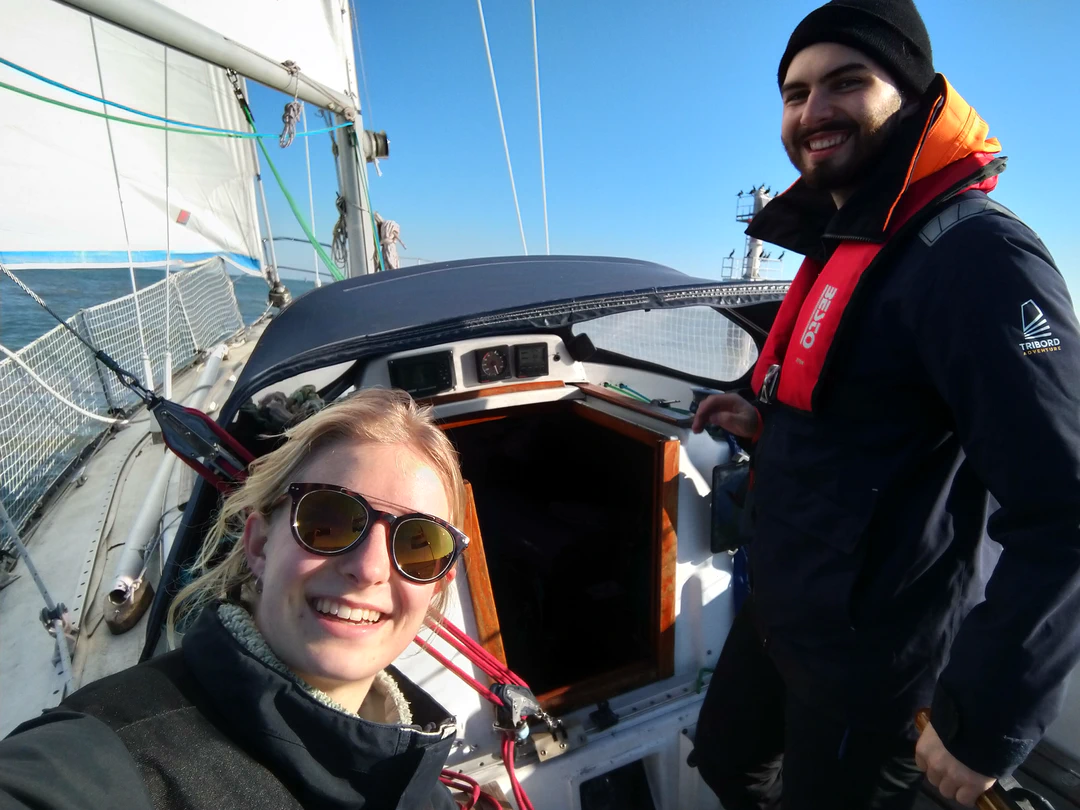
At some point, we decide to add the motor, to arrive in the next harbour before the water level becomes too low. Thanks to the motor we do, in fact, arrive on time. Whilst sailing the entrance to the harbour we pass a fish market, where some gigantic seagulls are waiting for the right moment to catch something to eat. The harbour coordinator hangs out of the window of his tower and asks us for our draft, then waves us through. As soon as we are docked, a gentleman of our neighbouring boat tells us that the harbour gates are not closing because they are broken.
(Explanation for our non-sailor friends: since the tidal range in this area is nearly seven meters, most harbours have something implemented to make sure the boats in the harbour are still floating at low tide. This can simply be some gates that keep the water in. Outside the gates at low tide, there might not be any water anymore.)
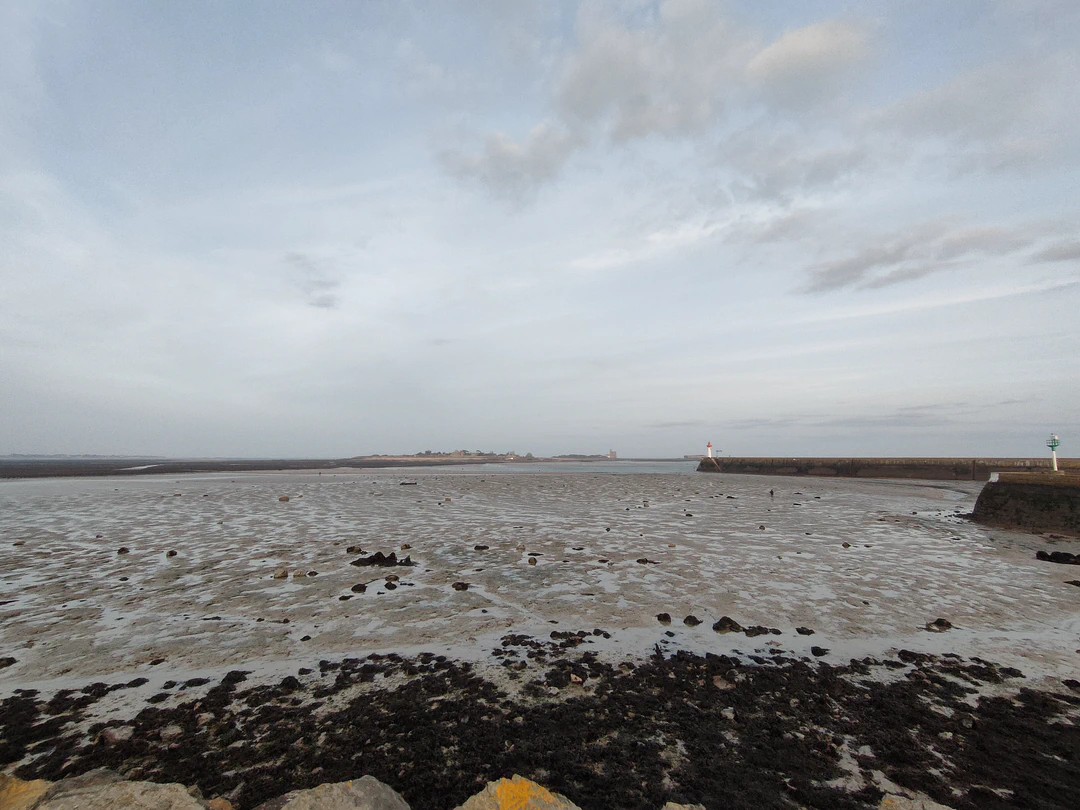
If the gates do not close, there would be about 30-40 centimetres of water left in the harbour. However, the ground consists of soft mud and we would simply sink into it, so that does not pose a problem.
I walk back to the harbour coordinator, who tells me the same thing: the gates are broken and currently always open.
Back on the boat, we have some lunch and afterwards, when I am reading in the sun the harbour coordinator comes by. He says he made a mistake with the date: the gates will close tonight around midnight, at high tide. They will then be repaired, which will take five days. So either we leave today, or we cannot leave for quite some time. It is too late for us to still reach another harbour we can immediately enter because the water is receding quickly. There is only half an hour left in which we can make it back to sea safely without getting stuck. We decide to leave immediately because the weather predictions for the next five days are excellent and it would be quite frustrating to then not be able to sail. We are also expecting visitors in a week and would like to be in Brittany by then. This means our only option is to keep sailing for another eight hours until the tide is again high enough that we can go into a harbour.
Luckily for us, the wind has indeed increased and since we now have the full current with us, we are cruising with 7-8 knots along the coastline. Our original plan had been to hop from harbour to harbour (like we had planned today), doing a small trip every day. Now, it seems like we can skip three harbours and get a good distance behind us. Cherbourg is still one step too far, we would be rounding a headland where strong currents could limit our speed a lot, and we would only arrive there in the middle of the night. That does not sound very appealing to us, and we are already content if we make it to St Vaast la Hougue. Which we do, just before seven o’clock. Unfortunately, we will not be able to sail into the harbour until around 21:15, when the gates of the harbour will open. The area before the entrance is quite shallow as well (dry, in fact, at low tide).
Thus, we decide to sail back and forth before the coast, while the sun sinks under the horizon and the temperature drops quickly. Stars start to appear, and on the land we see lights turning on one by one. Among them the light of the lighthouse. When it is fully dark, we also see quick flashing lights at sea, but the lights never seem to appear in the same place. They are dancing along the horizon, and we cannot figure out what they are. Later, we realise they might have been from electric pulse fishing.
At last, we enter the harbour. Because the water is flowing into the harbour quickly, there are some tricky currents and we need a few tries to dock. But we have made it, after a long but fantastic day of sailing!
